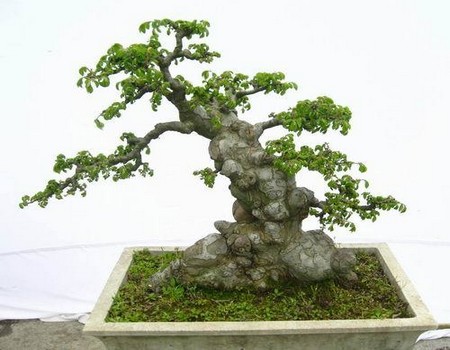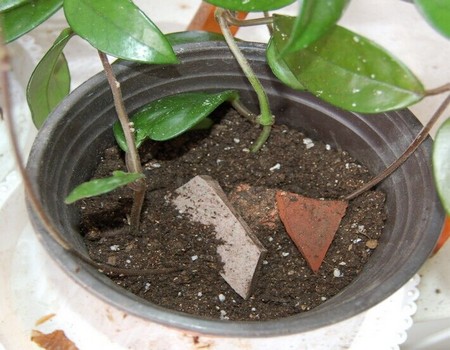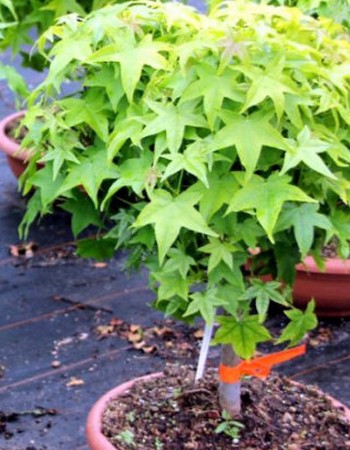Shaping and pruning technique of bonsai of Robinia pseudoacacia
The branching rate of Robinia pseudoacacia is low, there are no lateral branches in the middle and lower part of the trunk, and the trunk thickens slowly, and most of these trees have hard wood but slow Lignification process, which makes the trunk of the seedlings thin and soft. Because of the high water content in the upper part of the seedlings and dense leaves, it is easy to sprout branches in the second growth, resulting in top-heavy and light, after wind, rain and sun, the seedlings naturally bend. In addition, a large number of sprouting branches are caused by insect pests to bite young tips, resulting in the formation of headless seedlings. The following is to introduce the shaping and pruning techniques of Robinia pseudoacacia:

Tree shape: happy shape.
Annual pruning times: one in dormant period and two in growing season.
The main points of shaping and pruning in the first year: during the dormant period, 3 or 5 main branches with uniform distribution at the top of the trunk and strong growth were selected, 30 ~ 50cm were left for short cutting, the cutting buds were left on the side and at the same horizontal height, and all the other branches were cut off. Keep the tree shape of the main branch after sprouting in spring, remove the sprouting and erase all the lateral buds on the trunk and the main branch less than 3 in time.
The main points of shaping and pruning in the second year: in the dormant period of the next year, among the shoots sprouting near the top on both sides of the main branch, 2 or 3 branches were selected as elongated branches, and cut short at 40~60cm, the cutting buds were still left on the side of the branches, and the rest of the branches were all removed.
The main points of shaping and pruning in the third year: after germination in the third year, each branch continued to retain 2 or 3 uniformly distributed lateral branches and smeared buds. It can be formed in 5 years.
[pruning technology]
1. Cut dry at the right time
Every year, after the growth stops in spring, before the second growing season comes (usually in early July), the curved part of the top is cut off, and after sending out new branches, a vertical branch is selected as the new trunk.
2. Reasonable pruning
The so-called reasonable pruning is to retain as many lateral branches as possible without affecting the growth of the trunk, which is beneficial to the thickening growth of the trunk, speed up the Lignification process and avoid trunk bending. The specific operations are as follows:
(1) horizontal branches and branches close to horizontal branches are generally not cut, allowing them to prune naturally.
(2) the competitive branches affecting the growth of the main head should be cut off in time.
(3) the growth of other lateral branches which do not form competitive growth should be controlled and should be cut off in time when its thickness reaches 1 / 2 of the thickness of the trunk. Prevent the trunk sharpening from being too large and improve the trunk height at the same time. If the wound is cut too late, it is not good for healing.
3. Cut dry again
For 2-year-old and 3-year-old seedlings, when they begin to grow in spring, if the seedlings have no obvious main head or have a main head but are too oblique, they should be cut off again, and the cut should be selected at the beginning of the deflection.
Time: 2019-06-11 Click:
- Prev

Breeding method of orchids
Growing hoya is a simple matter, and the rate of return is very high. Although some varieties grow slowly, most grow vigorously and flower easily. The external characteristics of the marsh vary greatly, some like small bushes, some are Spider-Man with large leaves. Unlike most common plants, bulbs always flower on the same pedicel.
- Next

Propagation methods of witch hazel
Golden plum blossom is peculiar in shape and fragrant, early spring leaves bloom, petals such as line, light and graceful, for the important early spring flowering seedlings. It is suitable for solitary planting in the corners of dry gardens, the banks of poolside streams and the edges of seedling bushes. it is also a good material for making bonsai. Witch hazel's peculiar petals and graceful tree posture attract many people.
Related
- Fuxing push coffee new agricultural production and marketing class: lack of small-scale processing plants
- Jujube rice field leisure farm deep ploughing Yilan for five years to create a space for organic food and play
- Nongyu Farm-A trial of organic papaya for brave women with advanced technology
- Four points for attention in the prevention and control of diseases and insect pests of edible fungi
- How to add nutrient solution to Edible Fungi
- Is there any good way to control edible fungus mites?
- Open Inoculation Technology of Edible Fungi
- Is there any clever way to use fertilizer for edible fungus in winter?
- What agents are used to kill the pathogens of edible fungi in the mushroom shed?
- Rapid drying of Edible Fungi

